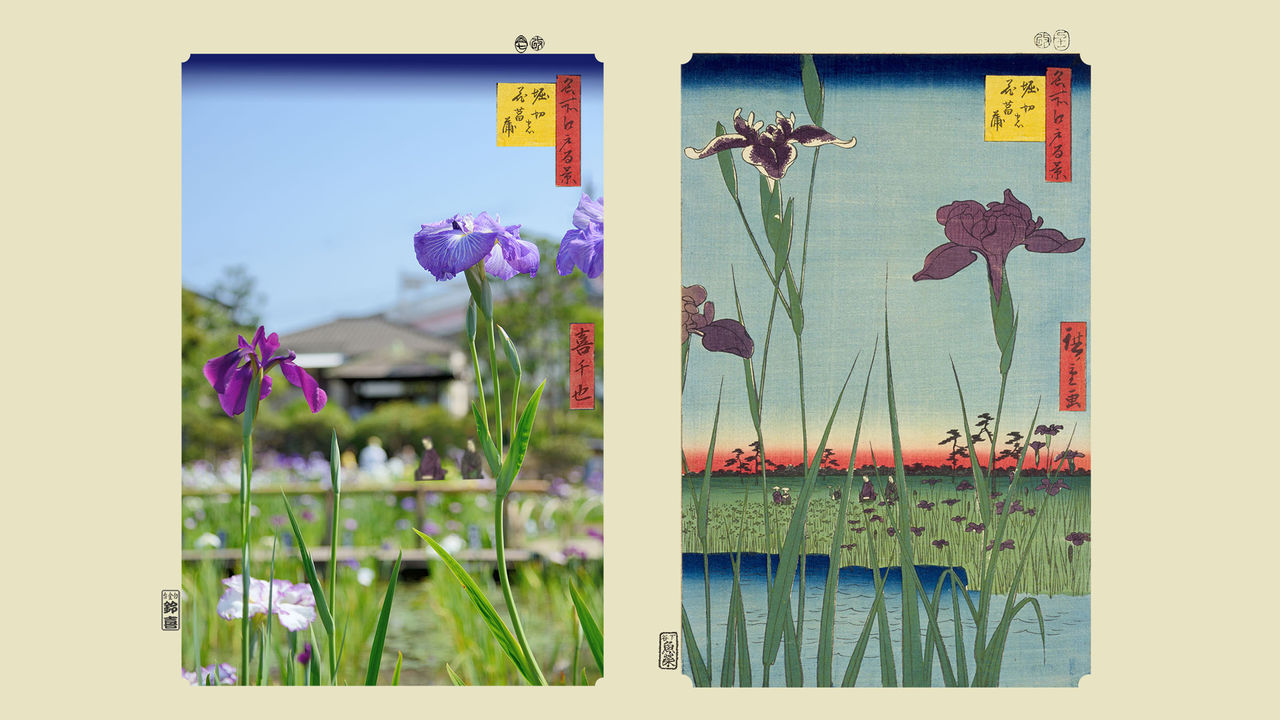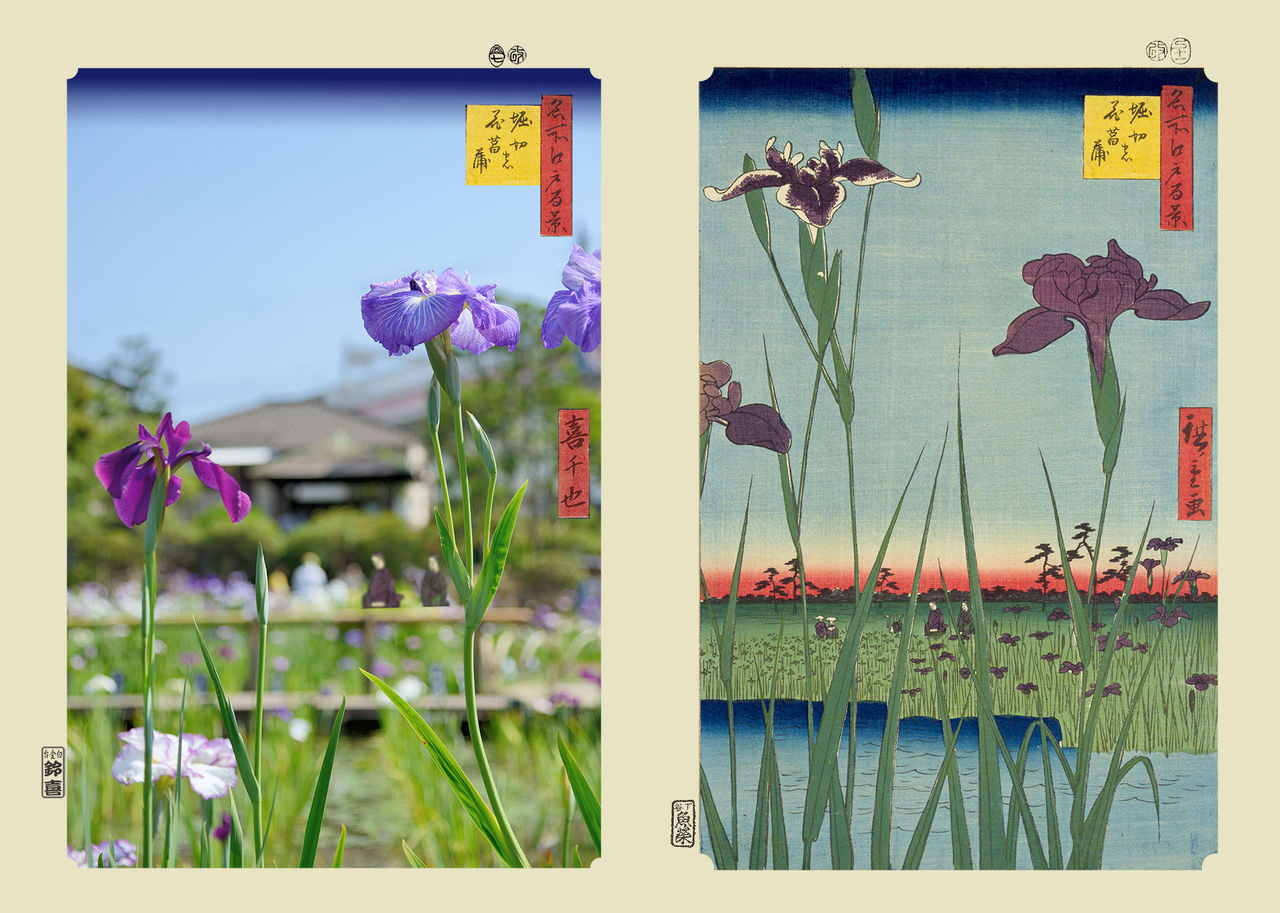
Flowers Are Forever: “Horikiri Iris Garden”
Guideto Japan
- English
- 日本語
- 简体字
- 繁體字
- Français
- Español
- العربية
- Русский
One Hundred Famous Views of Edo by Kichiya, the Ukiyo Photographer: Today’s Tokyo Through Hiroshige’s Eyes
Meisho Edo hyakkei, known in the West as One Hundred Famous Views of Edo, was one of ukiyo-e artist Utagawa Hiroshige’s most celebrated works, influencing even Western artists like Van Gogh and Monet. Drawn in Hiroshige’s final years and published from 1856 to 1861, the series depicted the sights of Edo (as Tokyo was then known) through the changing seasons. Audiences around the world admired Hiroshige’s inventive use of bold compositions, bird’s-eye-view perspectives, and vivid colors. A century and a half later, “ukiyo photographer” Kichiya has set himself the task of recreating each of these views with a photograph taken in the same place, at the same time of year, from the same angle. Join us in this new series at Nippon.com on a tour of these “famous views” in Edo and modern-day Tokyo, guided by Kichiya’s artistry and his knowledge of old maps and life in Edo.
A Jewel of the Rainy Season
The first iris garden in Horikiri, according to some sources, was founded in the early nineteenth century by a farmer named Kodaka Izaemon who collected varieties of the plant from around Japan. Other sources, however, note that Horikiri, which borders the Ayase River, offered marshland suitable to growing irises, and there is evidence that the flowers were cultivated in the area as early as the Muromachi period (1333–1568).
In any case, by Hiroshige’s time the irises in Horikiri were a popular attraction for people from Edo’s urban centers and even appear on old maps of the city. In his print Hiroshige depicts sightseers strolling through a garden amid the blooming flowers.
I snapped my photograph recreating the print in 2014, not long after I began this series. These days I prefer to capture more of the scene as it currently exists, but back then I used a wider aperture to blur the background. The iris gardens in Horikiri are smaller than in Hiroshige’s time, but by shooting from a low angle with plenty of sky in the frame I was able to create something reminiscent of the sprawling, open landscape that Hiroshige depicts.
About the Location
The Kodakaen was the first iris garden in Horikiri to attract broad attention during the Edo period (1603–1868) and was followed by several others established during the Meiji era (1868–1912). One of these, the Horikirien, became the Horikiri Iris Garden of today, and is now a protected historic site in Tokyo’s Katsushika. The area is still known as Horikiri, and Horikiri Station can be found on the Keisei Main Line. The garden boasts two hundred varieties of irises and is at its most picturesque from early to mid-June during the annual Katsushika Iris Festival when more than six thousand flowers come into bloom.
Location 2-19-1 Horikiri, Katsushika
Entry fee None
Hours of operation 9:00 am–5:00 pm daily (8:00 am–6:00 pm during Katsushika Iris Festival)
Access 10 minutes’ walk from Horikirishōbuen Station on the Keisei Main Line
tourism Tokyo ukiyo-e One Hundred Famous Views of Edo by Kichiya kantō Katsushika-ku
